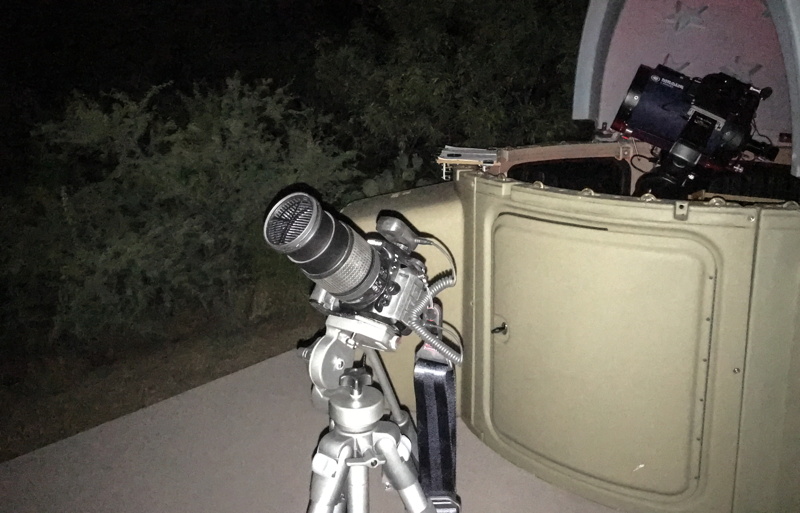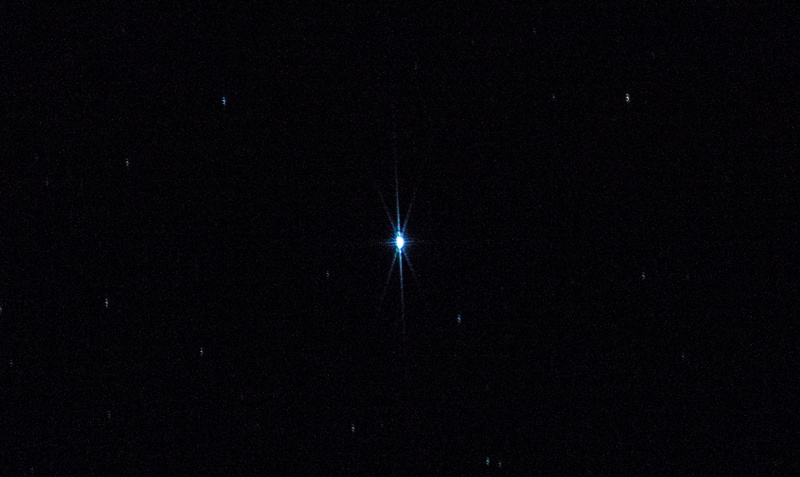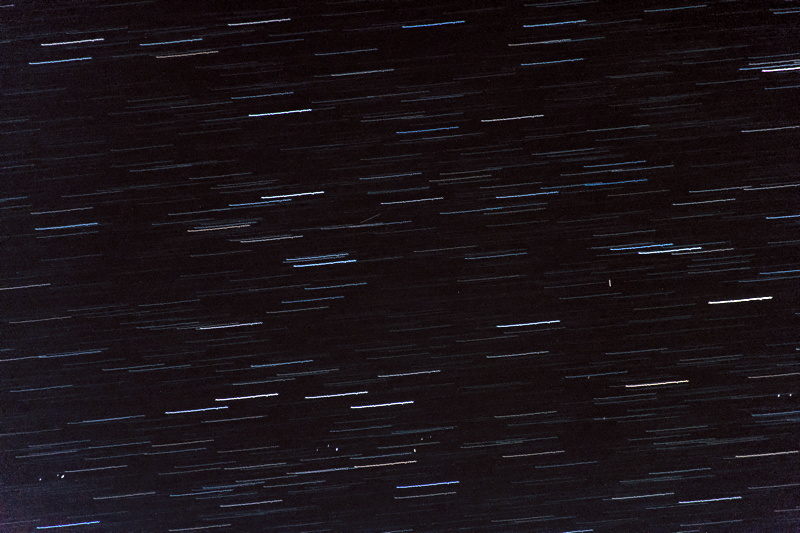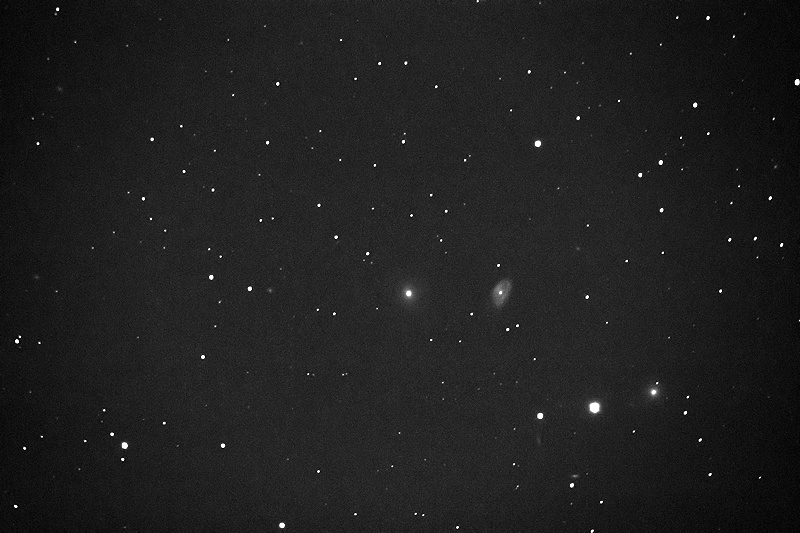Geosynchronous Satellites;
NGC474 & NGC470 Galaxies
Posted: 16 October 2017
|
Open: Sunday, 15 October 2017, 2104 MST Temperature: 73°F |
Session: 1150 Conditions: Clear, breezy |
Equipment Used:
12" f/8 LX600 w/StarLock
2" 24mm UWA eyepiece
Focal Reducer
Camera:
D7200 DSLR
After arriving at the observatory and opening the dome, I prepared the D7200 DSLR for photographing some geosynchronous satellites as described in the Sky & Telescope article "How to See and Photograph Geosynchronous Satellites".
2115 MST: LX600 ON, StarLock OFF, High Precision OFF.
Viewed M11 (Wild Duck Cluster, open star cluster), 102X.
I then set up the DSLR on the observatory patio to photograph geosynchronous satellites. Here is the setup with a Bahtinov Mask on the 18-140mm lens in order to get a precise focus:

I used the star Vega for focusing. This is a cropped 2 seconds, ISO 3200, White Balance 3570K, FL 140mm, image showing the in-focus diffraction pattern from the Mask:

I pointed the camera towards the South and about 5° below the Ecliptic (per the article). 2138 MST: took a 3 minutes, ISO 3200, White Balance 3570K, FL 140mm, exposure. The breezes really picked up during the exposure, as evident by "wiggling" in the star trails due to camera motion.

The non-trailed points of light along the bottom of the image are several geosynchronous satellites. There is also a faint satellite (slightly trailed) just above the center of the image and another one to the right of center in the image.
2202 MST: returned to the observatory and viewed the planet Neptune in the 12" LX600 telescope, 102X. Then viewed the planet Uranus, 102X.
Next, viewed M33 (Triangulum Galaxy), 102X. SYNCed the AutoStar on M33.
Viewed NGC474 and NGC470 galaxies, 102X. Both galaxies were faintly visible. SYNCed on the galaxies.
Mounted the D7200 DSLR at prime focus + focal reducer. Added a Right Angle Viewfinder to facilitate seeing the viewfinder. Focused on the star Alpha Aries (Hamal) using a 12" Bahtinov Mask.
Slewed to NGC474/470. 2230 MST: StarLock ON. Did a framing test exposure, StarLock autoguided, 1 minute, ISO 6400, WB 3570K. As I was attempting to take longer exposures the wind became stronger, affecting autoguiding and seeing. I finally gave up trying for longer exposures. This is the 1 minute exposure:

Mouseover or tap on image for labels
There are several other galaxies visible in the image. Mouseover or tap on the image to see labels to all the galaxies.
I will do longer exposures on a future session.
2245 MST: removed the camera from the telescope.
2253 MST: last look at Uranus, 102X. LX600 OFF.
|
Close: Sunday, 15 October 2017, 2305 MST Temperature: 73°F |
Session Length: 2h 01m Conditions: Clear, windy |
Comments are welcome using Email. Twitter users can use the button below to tweet this report to their followers. Thanks.
Cassiopeia Observatory Home Page
Copyright ©2017 Michael L. Weasner / mweasner@me.com
URL = http://www.weasner.com/co/Reports/2017/10/16/index.html
